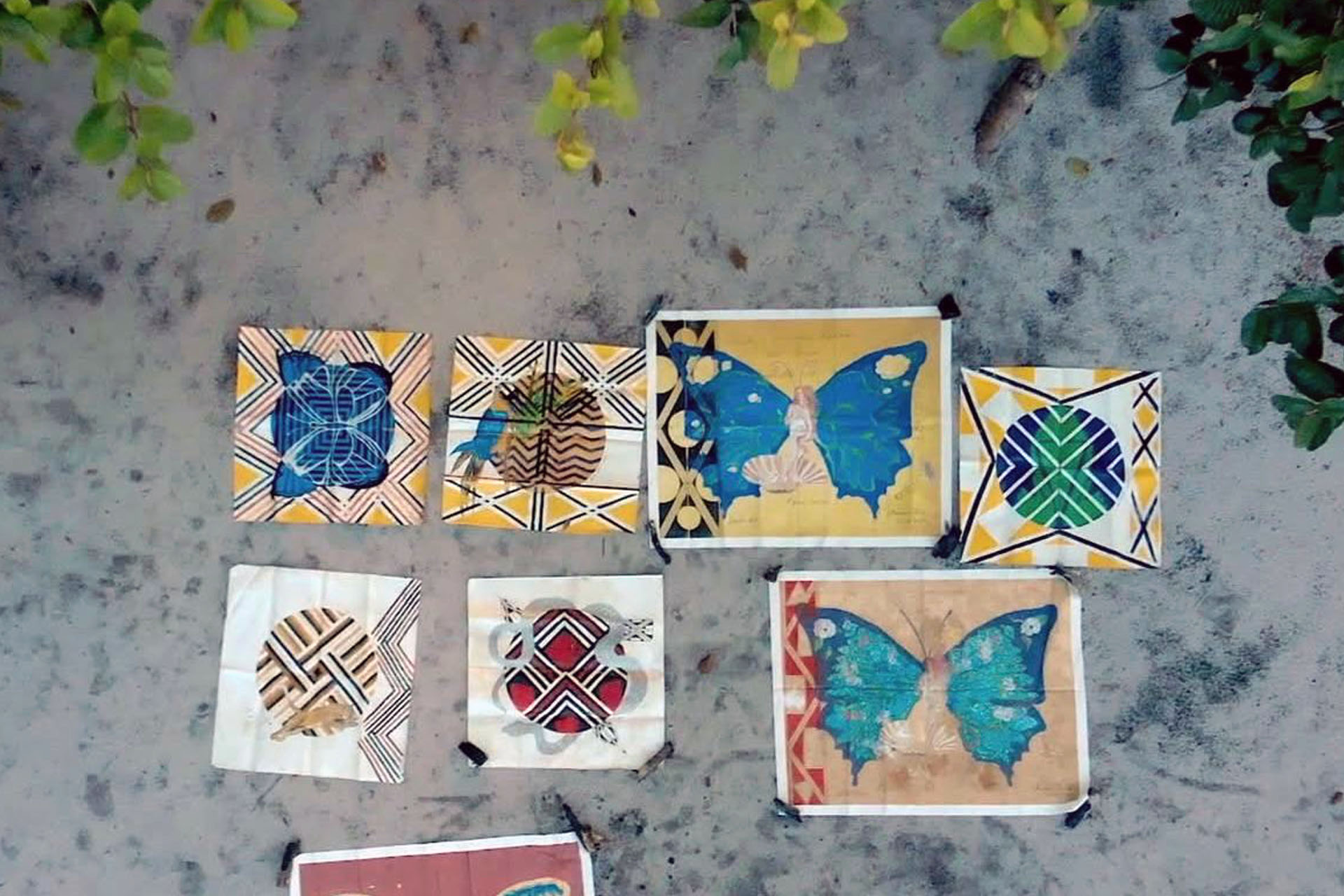Fio das Contas e Carregador de Pérolas – Threading Beads and Stringing Pearls
Cultural Center Cândido Mendes – Rio de Janeiro, Brazil – March 1999
Center for the Arts Helio Oiticica – Rio de Janeiro, Brazil – March 1999
 In order to place the work of Christina Oiticica, the artist from Rio de Janeiro, one must return to the art scene of the 1970’s, when the experimental movements which appeared in the mid-50’s were crystallized by innovations in neo-concrete art. In this respect, the artist is a child of that period. Neo-concrete art is opposed to the mathematic rigidity of São Paulo’s concrete art and to is pragmatism, and attempts to insert the work of art within an industrialization process.
In order to place the work of Christina Oiticica, the artist from Rio de Janeiro, one must return to the art scene of the 1970’s, when the experimental movements which appeared in the mid-50’s were crystallized by innovations in neo-concrete art. In this respect, the artist is a child of that period. Neo-concrete art is opposed to the mathematic rigidity of São Paulo’s concrete art and to is pragmatism, and attempts to insert the work of art within an industrialization process.
The intention in Rio was to prevent that pragmatic approach, to elaborate an art form which retained its mark of subjectivity (it is worth recalling that the philosophical text on which such works were based was Primacy of Perception, by the Frenchman Merleau-Porty) of the body and of the spectator’s active participation in the work, typical of Lygia Clark’s “beasts” – metallic articulations the can be mutated by the active “spectator”.
The seventies inherited, therefore, a cultural foundation and works which challenged this basis, the stage for these activities being the experimental room at the Museum of Modern Art of Rio de Janeiro.
An investigative pattern of the way of making art in the Rio de Janeiro scene was thus established. Christina Oiticica also took part in the deconstruction, which occurred during the eighties and nineties working with traditional materials. But a lot of her work belongs to the experimental basis of that time.
The peculiarity of most of the artist’s work deals with the sign of fluidity and of transparency, seen, for example, in the installation Stringing Pearls (Pot of Pearls), made in 1999. In this work she used embroidered bags of tulle, pearls and the suggestion of a Japanese garden, creating a kind of filtered environment, a tactile, optical and sensorial landscape modulated by the sensitive idea of transparency. Besides that, the artist has a sensitivity which is very precious these days, the unveiling of a peculiar perception which seems to come from a poetry of the feminine, poetry of the intimate feminine, to prevent any comparison with the works of feminism, which almost always have political connotations.
Wilson Coutinho












